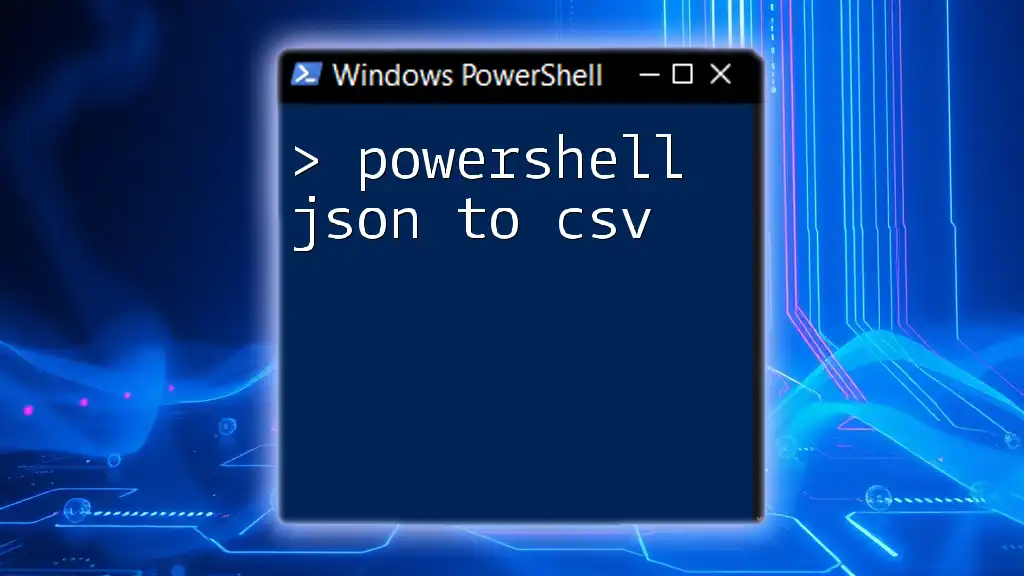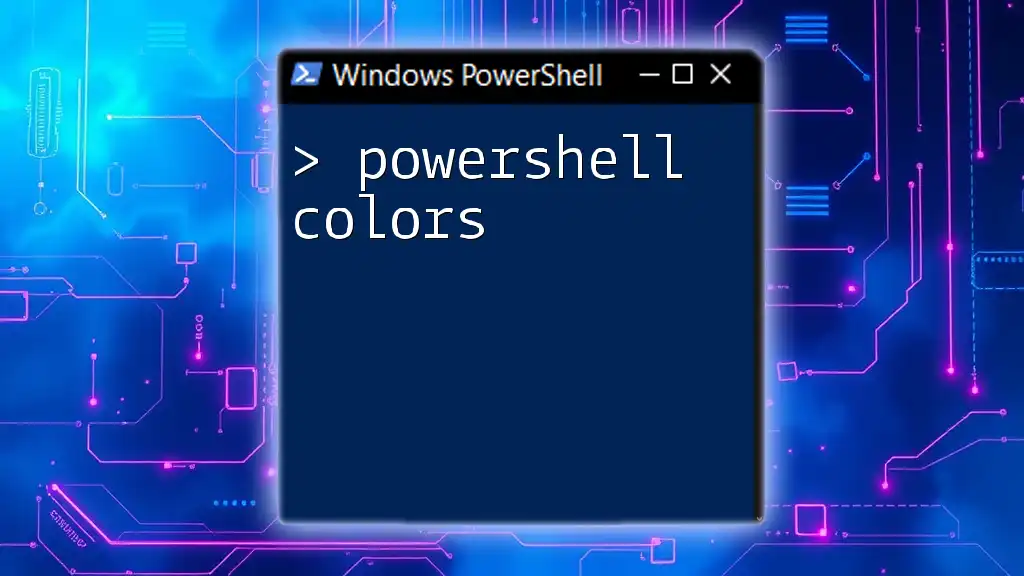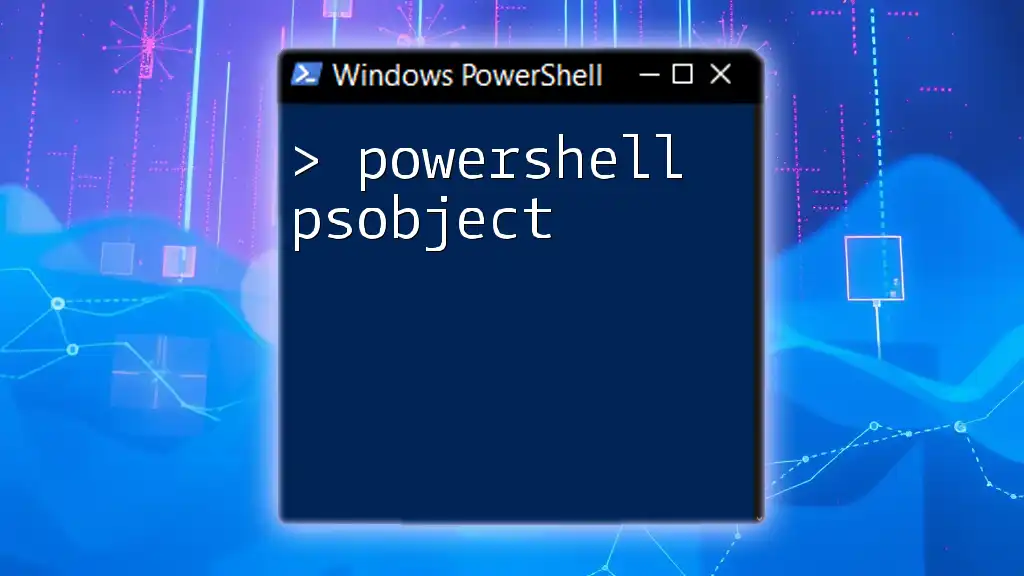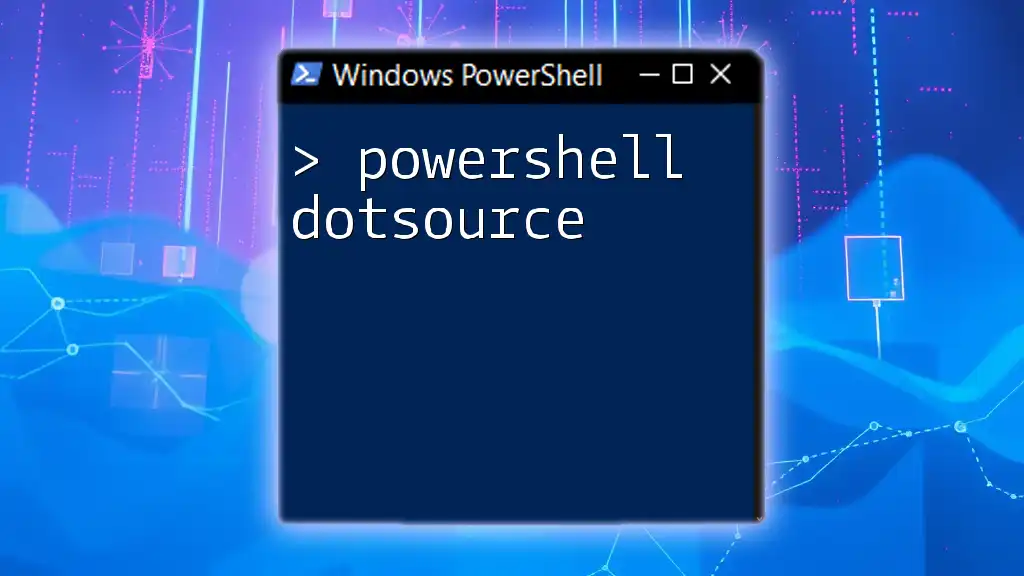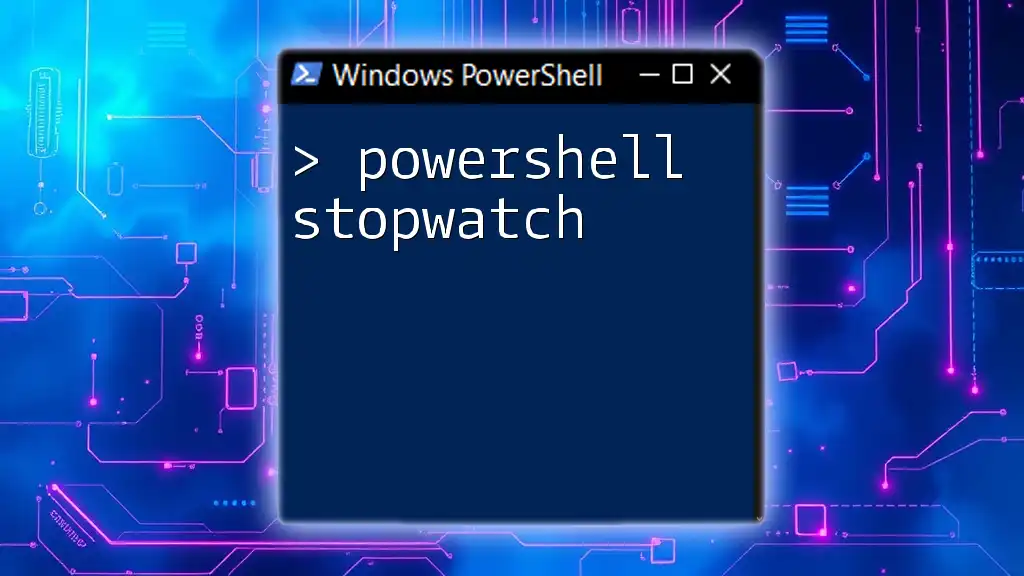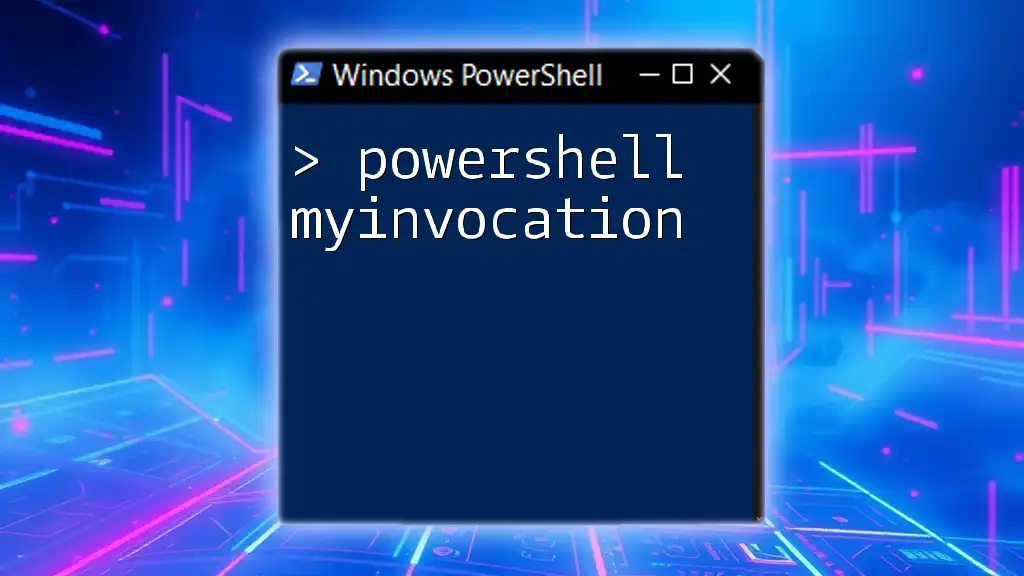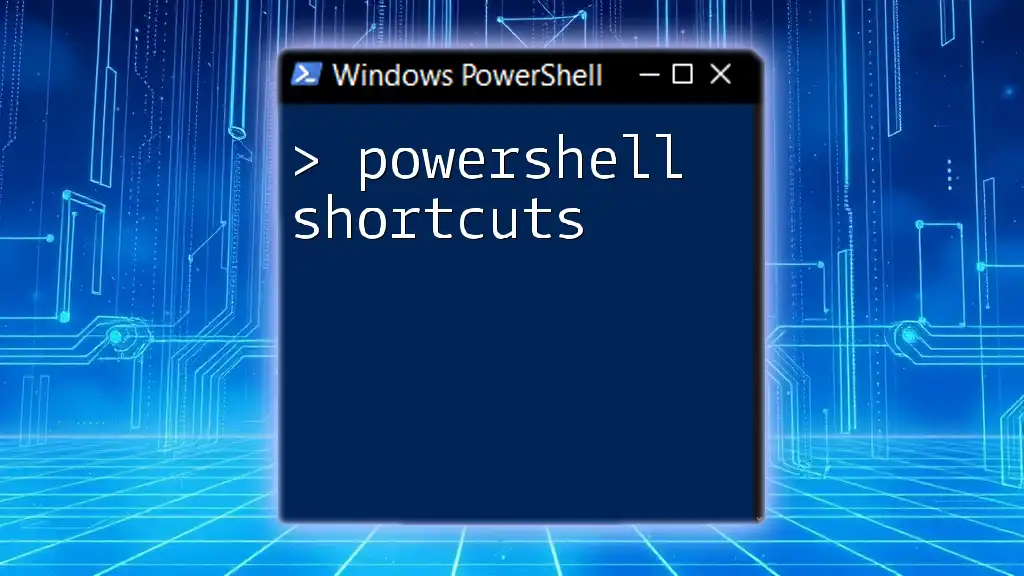To convert a JSON file to CSV format using PowerShell, you can utilize the `ConvertFrom-Json` and `Export-Csv` cmdlets in a simple one-liner.
Here's a code snippet that demonstrates this:
Get-Content 'data.json' | ConvertFrom-Json | Export-Csv 'output.csv' -NoTypeInformation
What is JSON?
JSON, or JavaScript Object Notation, is a lightweight data interchange format that is easy for humans to read and write, and easy for machines to parse and generate. It is widely used in web applications to transmit data between a server and a client, in APIs, and as a configuration format for various tools.
What is CSV?
CSV stands for Comma-Separated Values, a simple format used to store tabular data, such as a spreadsheet or a database. Each line in a CSV file corresponds to a row of data, with individual values separated by commas. This format is compatible with many applications, making it essential for data analysis and reporting tasks.
Why Convert JSON to CSV?
Converting JSON to CSV has several practical benefits:
- Interoperability: CSV is widely supported across various data analysis tools, making it easier to share information and integrate data from different sources.
- Simplicity: CSV files have a straightforward structure that is easy to manipulate and analyze.
- Data Analysis: Many analytics platforms work natively with CSV data, allowing users to perform complex queries and visualizations that may not be directly possible with JSON.
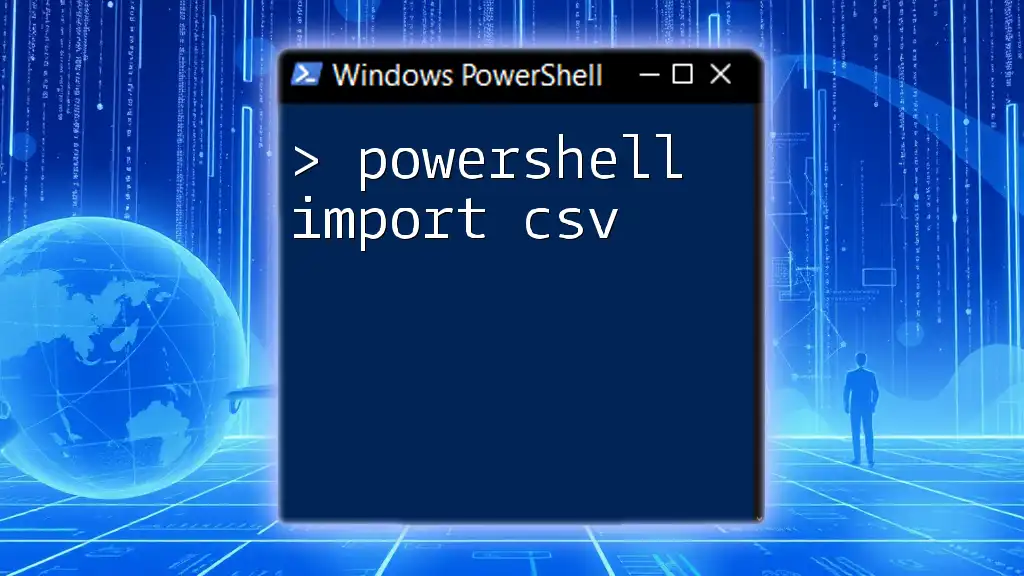
Understanding the Basics of PowerShell
What is PowerShell?
PowerShell is a powerful task automation and configuration management framework consisting of a command-line shell and associated scripting language. With its object-oriented approach, PowerShell allows users to perform administrative tasks on both local and remote systems with ease.
Why Use PowerShell for Data Conversion?
PowerShell provides a unique environment for data manipulation due to its built-in cmdlets that can handle different data formats seamlessly. It allows users to convert, filter, and export data effectively, making it an excellent choice for tasks such as converting JSON to CSV.
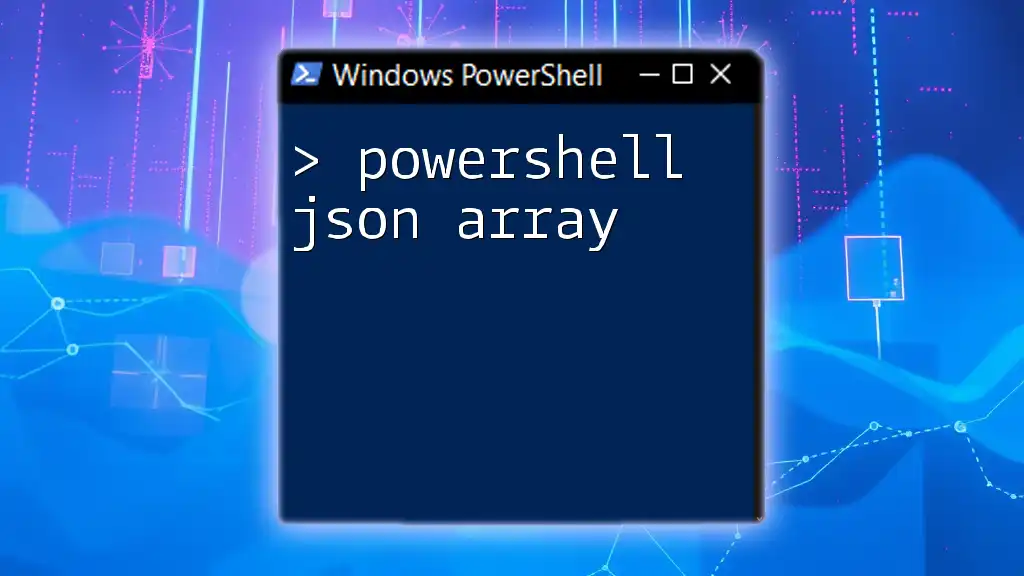
Getting Started with PowerShell
Setup PowerShell
To utilize PowerShell, you must first access it on your system:
- On Windows, search for "PowerShell" in the Start menu.
- On macOS and Linux, you may need to install PowerShell Core via package managers or from the official website.
Familiarizing yourself with some basic PowerShell commands is a good starting point. Here are a few common ones:
Get-Command # Lists all available commands
Get-Help <command> # Provides detailed information about a specific command
Installing Necessary Modules
While PowerShell has built-in functionality to handle JSON and CSV formats, ensure your version is updated. You can also enhance its capabilities by installing additional modules. To check for updates, run:
Update-Module -Name PowerShellGet
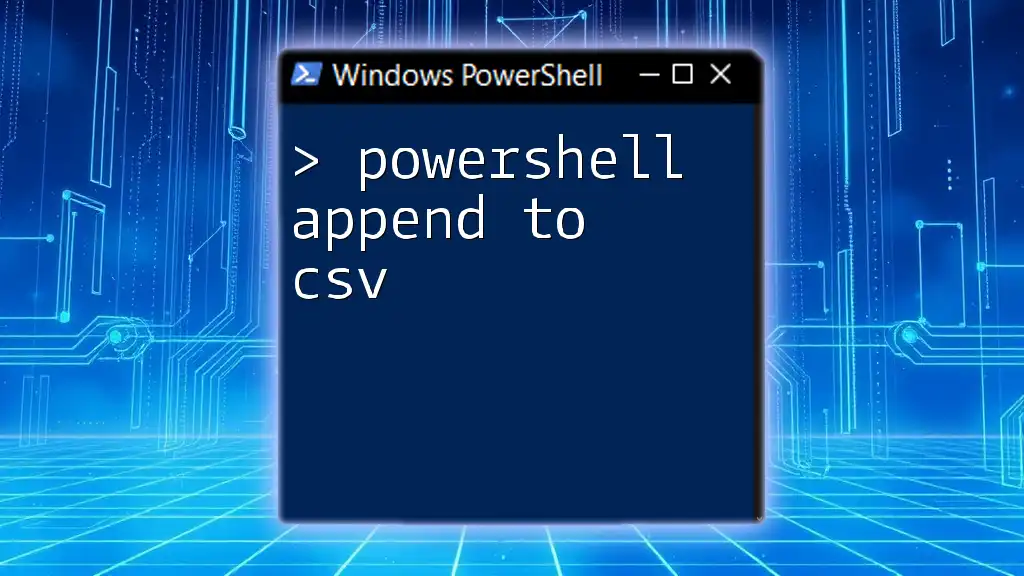
Converting JSON to CSV Using PowerShell
Basic JSON Structure
Before performing conversions, it is vital to understand how JSON is structured. Here’s a simple example of a JSON object:
{
"employees": [
{ "name": "John Doe", "age": 30, "department": "HR" },
{ "name": "Jane Smith", "age": 28, "department": "IT" }
]
}
Using PowerShell Cmdlets
PowerShell’s ConvertFrom-Json and Export-Csv cmdlets are essential for converting JSON to CSV. Here’s how you can do it:
- First, read your JSON file and convert its contents from JSON format:
$json = Get-Content -Path "C:\path\to\your\data.json" | ConvertFrom-Json
- Next, export the converted data to a CSV file with the following command:
$json.employees | Export-Csv -Path "C:\path\to\your\employees.csv" -NoTypeInformation
Adding the `-NoTypeInformation` flag prevents PowerShell from adding type information at the top of the CSV file, making it cleaner for analysis.
Handling Nested JSON Structures
JSON can often contain nested structures, which can complicate conversions. For instance, consider the following nested JSON:
{
"company": "Tech Corp",
"employees": [
{
"name": "John Doe",
"details": { "age": 30, "department": "HR" }
},
{
"name": "Jane Smith",
"details": { "age": 28, "department": "IT" }
}
]
}
Flattening Nested JSON for CSV
To convert nested JSON structures into a flat CSV format, you should extract the relevant values. Here’s how to flatten the above JSON example to execute the conversion properly:
$json = Get-Content -Path "C:\path\to\nested\data.json" | ConvertFrom-Json
$flatData = foreach ($employee in $json.employees) {
[PSCustomObject]@{
Name = $employee.name
Age = $employee.details.age
Department = $employee.details.department
}
}
$flatData | Export-Csv -Path "C:\path\to\your\flattened_employees.csv" -NoTypeInformation
In this example, a `foreach` loop iterates through each employee, creating a custom PowerShell object that flattens the data by extracting the `name`, `age`, and `department` into a simple format suitable for CSV.

Common Issues and Troubleshooting
Permission Issues
When working with PowerShell, you may encounter permission-related issues, especially when accessing files. Ensure that you run PowerShell with appropriate privileges or change your file permissions if necessary.
Malformed JSON
If your JSON is malformed, you will likely run into errors during conversion. You can inspect the structure of your JSON in a text editor or use validation tools to ensure it adheres to JSON standards.
Handling Large JSON Files
Processing large JSON files can be resource-intensive. Consider using streaming techniques or breaking up data into smaller chunks to manage memory usage effectively. PowerShell also includes commands for handling larger datasets, which can help streamline the process.
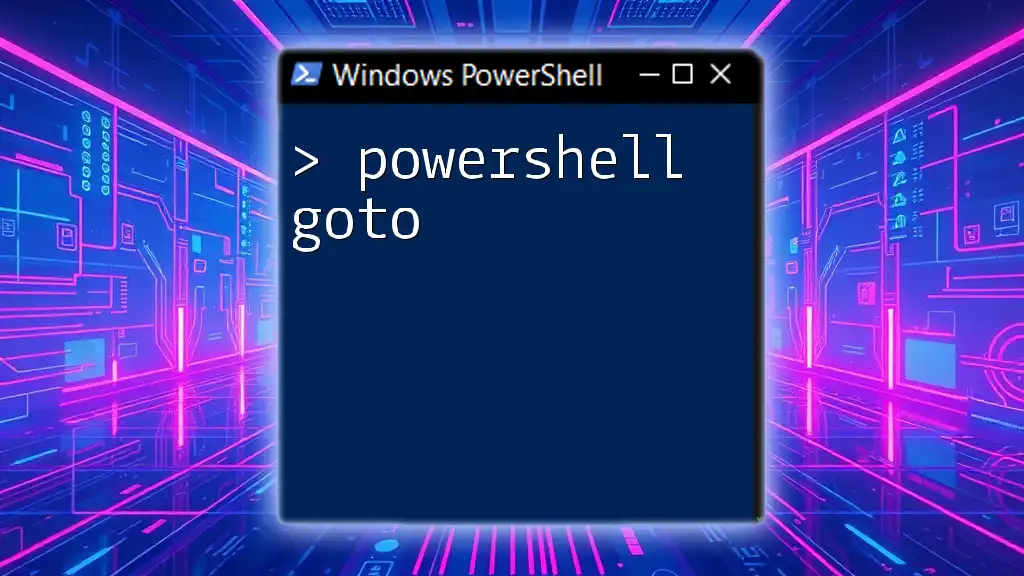
Best Practices
Verifying CSV Output
Always check the output of your CSV file to ensure that the data has been converted correctly. Open the CSV in a spreadsheet program or use PowerShell to read back the data:
Import-Csv -Path "C:\path\to\your\flattened_employees.csv"
Regularly Backing Up Data
Regular data backups are crucial, especially before performing conversions. Backup both your JSON source files and the resulting CSV files to avoid data loss.
Using Comments in Scripts
Adding comments to your PowerShell scripts can significantly enhance readability and maintenance. For example:
# Convert JSON to CSV
$json = Get-Content -Path "data.json" | ConvertFrom-Json

Conclusion
In this guide, we explored the process of converting JSON to CSV using PowerShell. From understanding the basics of JSON and CSV to employing PowerShell cmdlets for effective conversion, we have equipped you with practical techniques to tackle this common data task.
As you continue to learn and explore PowerShell, we encourage you to deepen your knowledge through practical exercises and additional resources available online. Join communities where you can find support and share insights with fellow learners.
Taking the next step in your PowerShell journey will enhance your data handling skills and open up new avenues for automation and analysis. Happy scripting!

